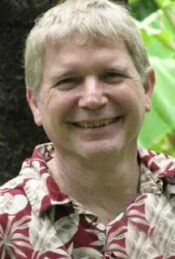I had the pleasure of attending the AMSAT seminar in Penticton, BC, Canada this summer, and have been using this device in my office since then. At this point, I am able to comment on some of the strengths and weaknesses of the system. This could very well be limited by my understanding of AMSAT’s potential, as it was made clear that the first seminar had just scratched the surface.
Thus far, it has proven to be an excellent overall diagnostic approach. As it provides information about physical structure and function, it gives a quick but in depth report about a person’s state of health. It is also a great complement to energetic testing methods, as the two give a more complete view of the patient’s status.
Most people are able to recognize specifically at least some of what AMSAT is finding when I explain the results to them. Here are a few examples:
32 year old female showed extreme stress on the left ovary and uterus. When I indicated this, she stated that she had the ovary removed, and had recently had an IUD removed due to complications.
53 year old male showed extreme stress in both lower limbs. When I reported this, he stated that he had a great deal of chronic stiffness and soreness in the legs. He practiced martial arts, and believed that an injury had occurred and that he had not fully recovered from it.
One of the more interesting cases was a 62 year old male who demonstrated almost completely blocked regulation. He reported a history of rarely being ill. His main complaint was fatigue. I inquired about trauma, but he was unable to remember any that were significant. He only later remembered that he had two severe head injuries as a child, both resulting in loss of consciousness. One was due to a strike by a baseball bat, and the other incurred in a car accident. This seems to be a perfect example of the “inflexible system”, in which one seems well until a catastrophic event/illness occurs. There is no bending, and then a break occurs. I suspected a head injury in this case, and am now wondering if such trauma is a common cause of these types of disruptions. I would appreciate any information others have in this area.
Based on this information, he began therapy to resolve this issue, but we have not yet repeated his AMSAT test to determine progress.
The AMSAT is also an excellent device to show changes as a result of therapy. The best approach seems to be serial measurements taken during any therapeutic program. This provides excellent incentives to patients. Some tend to forget how ill they were or how much change has taken place. We have also used it to measure changes after a single therapy in order to demonstrate the immediate effects. The AMSAT gives an objective measure of their progress and aids in their health care decisions. As expected, the structural measures change more slowly than the functional aspects, but over time we have seen improvement occur in both areas.
The one area that I have not found the AMSAT to be helpful is in the testing of specific therapeutic agents before therapy is begun. Everything that I have tested so far has produced at least some negative effects somewhere in the patients system. Trying to develop a treatment regime based on this approach has proven to be laborious, time consuming, and frustrating. I have also attempted to test groups of supplements, but this has not helped either. My hope had been that this method could be used to fine tune a person’s treatment and provide evidence to them that it would be effective. This has not happened, and I am open to suggestions if others have found a way to utilize AMSAT more effectively in this area.
Overall, AMSAT has proven to be a valuable addition to the office. Both my patients and I are impressed with the accuracy of the information that it provides, and how it is able to help guide therapy decisions. Here’s one vote for having a Part 2 seminar regarding the further use and interpretation of the AMSAT.
 An Exclusive Article for Members
An Exclusive Article for Members
From THE BRIDGE Newsletter of OIRF
Published December 2008
Redaction by: Carolyn L. Winsor
© Copyright 2008, Dr. Ted Cole, ID USA



